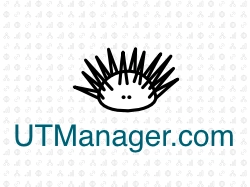Effective lead generation focuses on identifying, engaging, and qualifying potential customers. Instead of waiting for prospects to find you by chance, marketers use targeted strategies to draw in the right audience, offer them value, and collect their information for future follow-up.
Leads can be generated through both inbound (attracting users through valuable content and experiences) and outbound (actively reaching out to prospects) methods. Once leads are captured, they’re typically nurtured through personalized communication until they’re ready to engage with sales or make a purchase.
Common lead generation channels and tactics include:
- Content Marketing: Blog posts, whitepapers, guides, webinars, and videos that provide value and attract qualified audiences.
- Email Marketing: Targeted campaigns that engage prospects and encourage them to take the next step.
- Search Engine Optimization (SEO): Optimizing content to rank for relevant keywords and capture organic traffic.
- Social Media Marketing: Sharing valuable content, running lead ads, and building communities to reach and engage audiences.
- Paid Advertising: Google Ads, Meta Ads, LinkedIn Ads, and other paid channels to drive targeted traffic to conversion-focused landing pages.
- Lead Capture Forms & Landing Pages: Collecting contact information through gated assets, sign-ups, or special offers.
- Partnerships & Content Syndication: Expanding reach through third-party platforms, affiliates, or co-marketing campaigns.
- Outbound Prospecting: Cold emails, LinkedIn outreach, or targeted sales development to proactively generate leads.
Example: A B2B SaaS company publishes a gated “2026 Industry Benchmark Report” promoted through LinkedIn Ads and email campaigns. Interested professionals fill out a short form to download the report, generating hundreds of marketing-qualified leads that are then nurtured with automated email sequences until they’re ready for sales follow-up.
Best practices for optimizing lead generation:
- Define Your Target Audience: Use demographics, firmographics, psychographics, and behavioral data to focus efforts on high-fit prospects.
- Create Compelling Offers & Content: Deliver real value that motivates prospects to exchange their information.
- Use Clear CTAs: Encourage action with well-placed, benefit-focused calls-to-action (e.g., “Get the Free Guide,” “Start Your Trial”).
- Leverage Multiple Channels: Diversify acquisition sources to balance cost and volume.
- Nurture Leads Effectively: Use personalized email workflows, retargeting, and content sequences to build trust and move leads through the funnel.
- Test & Optimize Continuously: Refine targeting, creative, forms, and landing pages to improve conversion rates and lower CPL.
Example (Ecommerce): A home décor brand runs Instagram ads offering a “10% Off First Purchase” sign-up incentive. Visitors land on a simple, mobile-optimized form and enter their email. They’re then added to a welcome email series showcasing bestsellers and customer stories. This campaign steadily generates thousands of leads per month at a low CPL, feeding their email marketing funnel.
